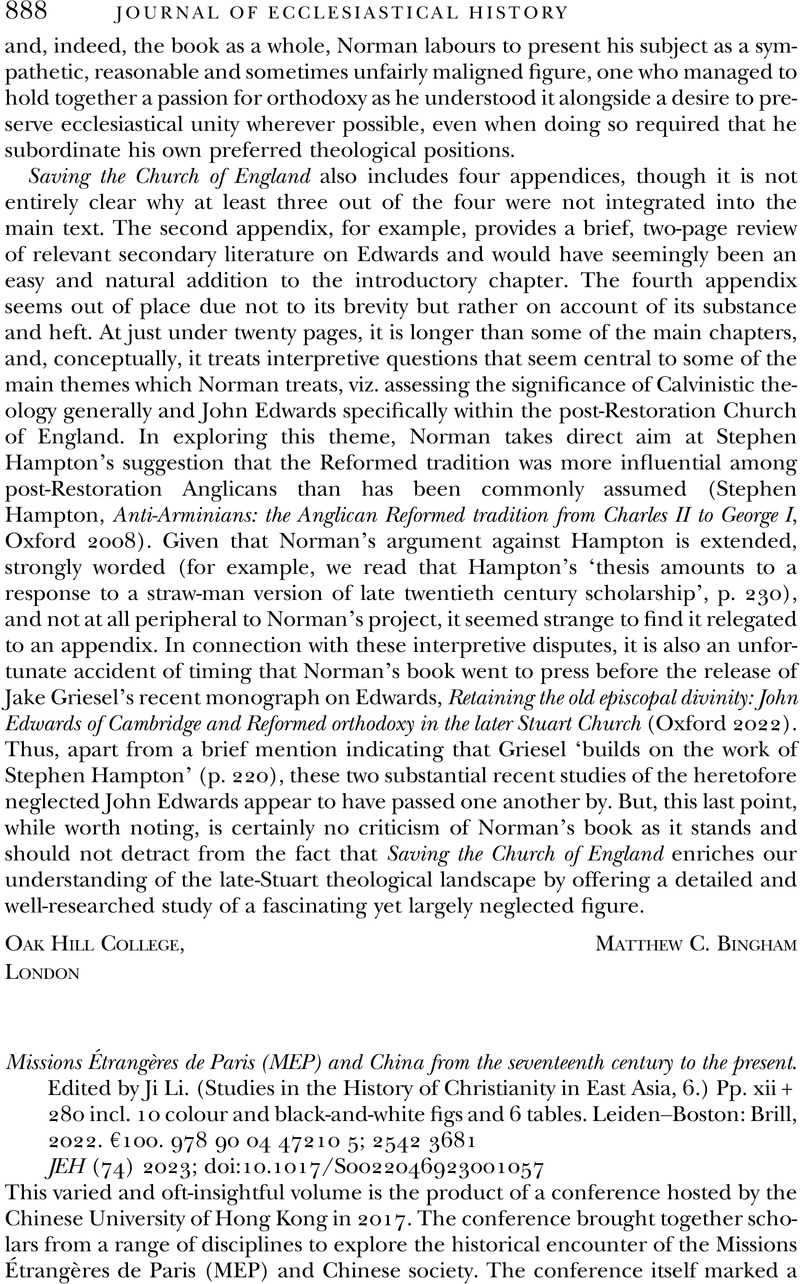No CrossRef data available.
Article contents
Missions Étrangères de Paris (MEP) and China from the seventeenth century to the present. Edited by Ji Li. (Studies in the History of Christianity in East Asia, 6.) Pp. xii + 280 incl. 10 colour and black-and-white figs and 6 tables. Leiden–Boston: Brill, 2022. €100. 978 90 04 47210 5; 2542 3681
Review products
Missions Étrangères de Paris (MEP) and China from the seventeenth century to the present. Edited by Ji Li. (Studies in the History of Christianity in East Asia, 6.) Pp. xii + 280 incl. 10 colour and black-and-white figs and 6 tables. Leiden–Boston: Brill, 2022. €100. 978 90 04 47210 5; 2542 3681
Published online by Cambridge University Press: 04 October 2023
Abstract
An abstract is not available for this content so a preview has been provided. Please use the Get access link above for information on how to access this content.

- Type
- Reviews
- Information
- Copyright
- Copyright © Cambridge University Press 2023



